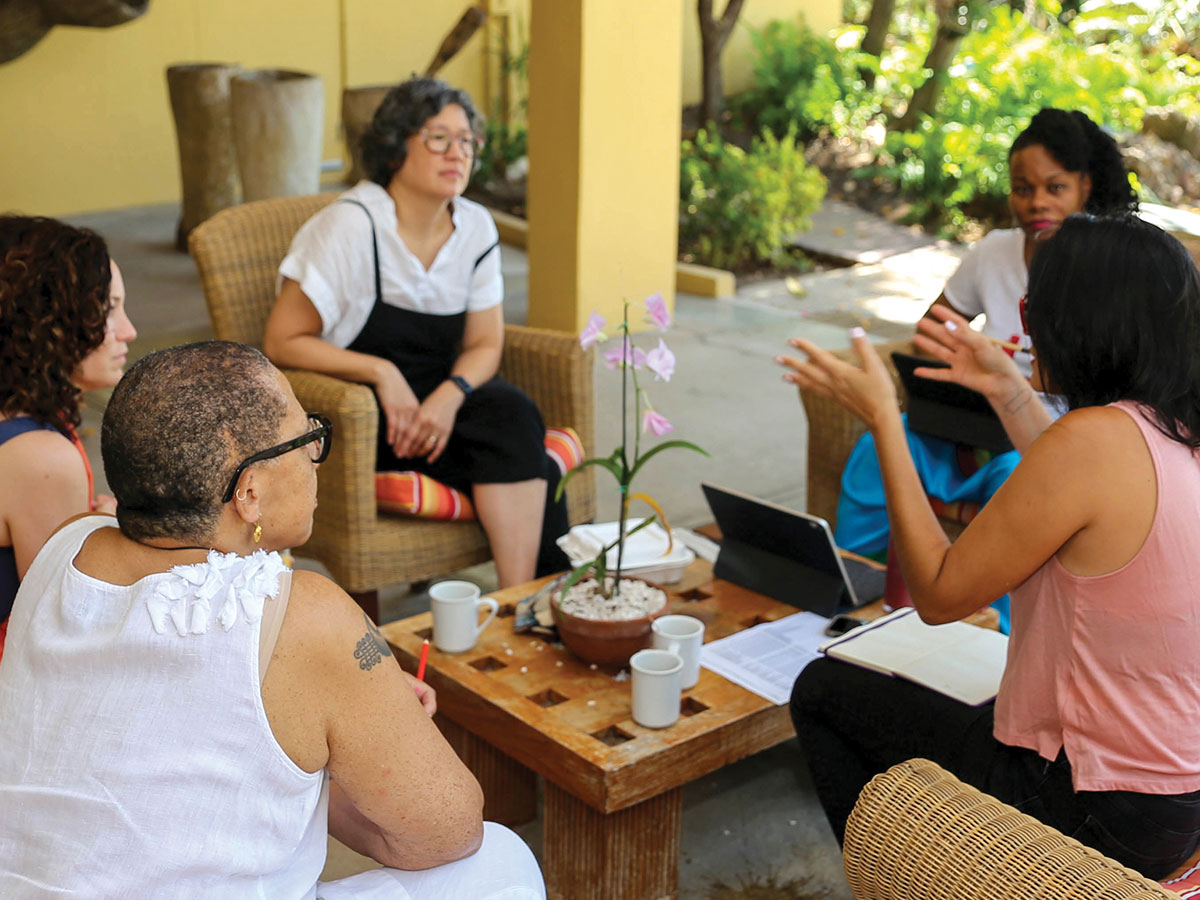
Streamlining Basics Series – Project Streamline Essentials for New Grantmakers (and Everybody!)
What do you know about streamlining your grantmaking? If you are new to the field, your answer might be nothing. And even if you’ve been in your role for a while, there are a lot of field trends, best practices, and hot new things to pay attention to in the philanthropic sector. It’s possible that these ideas haven’t caught your attention.
 So let us (re) introduce Project Streamline!
So let us (re) introduce Project Streamline!
This series of blogs will remind you of Project Streamline’s diagnosis of our field’s application and reporting challenges, streamlining’s core principles, and practical recommendations for good practice.
Streamlining Basics blogs will tackle the following topics:
- What is Project Streamline and Where’d it Come From? (today’s blog)
- Wearing the Streamlining Goggles – Four Streamlining Principles
- Right-sizing Application and Reporting
- Budgets and Financial Reporting
- Making Reporting Mean More
- Online Systems
- Getting Started With a Streamlining Process
What is Project Streamline and Where’d it Come From?
Without going into a long history (you can read more here), here are the basics: Project Streamline arose when a group of membership and other infrastructure groups that support grantmaking and grantseeking organizations came together under the leadership of PEAK Grantmaking (then called Grants Managers Network) to address a fundamental issue in the philanthropic sector: the burden of grant application, monitoring, and reporting on nonprofit organizations.
We conducted substantial field research, which resulted in two reports: Drowning in Paperwork, Distracted from Purpose, and Practices That Matter – which define the issues in application and reporting in much greater detail.
So what’s the issue?
Simply put, the cumulative impact of grantmakers’ distinct and often laborious application and reporting requirements undermines nonprofit effectiveness, causing grantseekers to devote too much time to
seeking funding (often without payoff) and reporting on grants (often without benefit) to the detriment of their mission-based work.
In other words: every grantmaker was imposing a different set of idiosyncratic requirements on grantees without much regard for how much time and effort were needed to meet those requirements.
We identified ten specific “flaws” in the system as it was configured at the time
- Enormous Variability in requirements between grantmakers and even within a single grantmaker. A nonprofit grantseeker never knows what they will encounter in terms of timeline, requirements, online system specifications, financial information, and access to a relationship with a grantmaker.
- Requirements Aren’t “Right-Sized”, leading at times to a process that is not congruent with the size or type of the grant, or with the prior relationship with the nonprofit.
- Net Grants Too Small – The cost of seeking and reporting on funding can eat away significantly at the funds granted, leaving grantees with a much smaller amount of money left over (or “net grant”) than intended.
- Outsourced Burdens – Grantmakers tend to pass administrative and evaluative work to grantseekers without compensating them. This was especially vivid when more applications were due in hard-copy (ten copies, double spaced, in binders with tabs!) but still exists today in more subtle ways.
- Trust Undermined – Nonprofit grantseekers understand stringent requirements and monitoring without relationship building to be evidence that grantmakers don’t trust them.
- Reports on a Shelf 1– Funders fail to use grant reports strategically, either to influence future grantmaking or to share knowledge with the field. Some aren’t even read!
- Fundraising Gymnastics – Rapidly shifting priorities, an obsession with project funding, and a bias toward “innovation” lead many grantseekers to twist themselves into knots to put together an appealing proposal.
- Due-Diligence Redundancy – Grantmakers require redundant and sometimes unnecessary documentation from grantseekers.
- Double-Edged Swords – Online systems & Common Grants – Some streamlining strategies have created new challenges, even as they’ve solved old problems. Online systems, now prevalent, have a host of quirks that can waste grantee time.
- Time Drain for Grantmakers – Funders struggle with their own administrative inefficiencies in the grantmaking process, spending more time on things that matter less, rather than relationship building, field building, and learning.
The good news is that we’ve seen some progress in the last ten years on many of these issues! The bad news is that they still exist – in some form or another – throughout the sector. Stay tuned for our next edition of Streamlining Basics, Wearing the Streamlining Goggles – Four Streamlining Principles. We will explore four key principles to keep in mind if you’d like to introduce or expand streamlining efforts at your organization. If you have other streamlining questions or interests, drop us a line at drstreamline@peakgrantmaking.org
1 Reporting requirements and usage are the topic of this year’s big Project Streamline investigation! Read all about it at http://www.peakinsightjournal.org/


